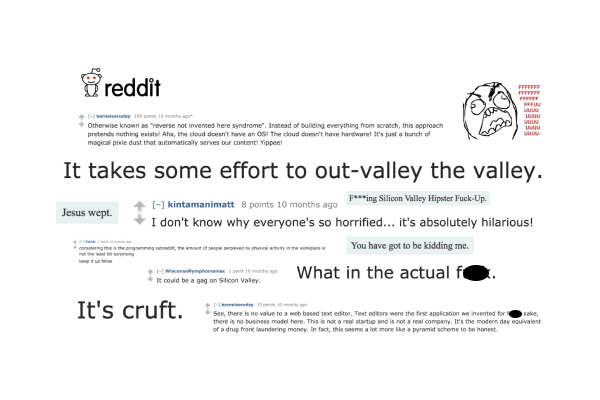
Hiring Developers for Startups: The Story of Unless
HR Tips Honeypot
In a highly competitive hiring environment, the success of a startup often hinges on the ability to bring skilled in-house team on board.
But how can a startup stand out in the crowd and attract talented developers?
Marcel Panse, the co-founder and CTO of Unless, reveals his practices for hiring developerts for his startup.
Meet Marcel Panse: Developer Turned Startup Founder
From his high school days, Marcel Panse has had a keyboard at his fingertips and a passion for coding in his heart. But his drive to enhance product development and UX eventually led him to the entrepreneurial path.
Today, he stands as a seasoned entrepreneur, having co-founded Unless together with Sander Nagtegaal.
“Starting your own company sort of happens when you find a problem passionate enough to solve,” Marcel explains as he recounts the beginnings of Unless.
Starting a Startup: The Genesis of Unless
Originally a weekend side project, Unless sprang out of a pressing need.
Marcel and Sander saw a market gap - a tool that would make their professional lives easier. “We needed something, we couldn’t find in the market,” Marcel notes.
So, they rolled up their sleeves and began crafting a solution themselves — Unless was conceived.
Their project swiftly transformed into a market-ready offering. The catalyst was a blog post about their server-less setup, which was very uncommon in 2015. The post went viral on many tech platforms, causing ripples and attracting a barrage of attention and requests.


Caption: The flood of feedback took the blog post to new heights, putting Unless’ product in the spotlight for their soon-to-be clients.
Suddenly thrust into the spotlight, Marcel and Sander made their venture official by registering the company. That moment laid the legal foundation of today’s Unless.
Today Unless stands for end-to-end platform companies use to boost internal productivity and customer success. Through Unless they can deploy multi-channel, AI-powered conversational search for diverse audiences across use cases.
The Challenges of Hiring Developers for Startups
After a successful launch, they started growing. And growth brings new challenges.
For Unless, it meant scaling their tech team to keep pace with demand and bring their product to a new level.
Marcel posted a job ad to various job boards and social media.
Soon he found himself swamped with job applications. “In a day, we received 90+ applications from incompatible candidates. Sorting through that noise took too much of my time” he recalls.
Marcel explains the challenges that made it hard for him to find a software engineer:
- It’s time consuming. Reviewing job applications is a lengthy task for startup founders. It limited Marcel’s ability to effectively lead the team or focus on enhancing product and overall operations.
- Difficulty in finding qualified candidates. Marcel notes: ‘In the Netherlands, I don’t think it’s the quantity of developers that’s the problem - it’s the quality’. For Marcel foundational knowledge in computer science is a crucial aspect that makes a strong developer. Unfortunately modern-day programming courses often don’t take this into consideration.
Why Hiring Quality Developers Is Crucial for Startups
Marcel has observed firsthand the impact that hiring decisions can have on a small company. “In a startup, you lack the luxury of time. A developer who requires hand-holding means diverting your focus,” he says.
Marcel values developers who can spearhead projects and make informed decisions independently. “One exceptional developer outperforms several mediocre ones,” he concludes.
How Honeypot Streamlined Unless’ Hiring Process
As mentioned before, Marcel discovered that hiring quality developers was a challenge for a lean startup like Unless. After posting the job he was overwhelmed with a flood of applications. He faced a challenge of time-consuming reviews of often unqualified applications.
Enter Honeypot, a game-changer in Unless’ tech hiring.
Honeypot’s reverse recruiting approach allowed Marcel to sidestep irrelevant applications. Using Honeypot’s platform, he filtered candidates by location, visa status, tech stack, language proficiency. This efficient approach spared him from sifting through numerous resumes.
With over 300 new candidates joining weekly, Marcel efficiently shortlisted the most relevant ones with just a few clicks.
Honeypot’s internal team conducts initial interviews and coding tests for every developer they enlist. That’s why Marcel can be confident all candidates are actively looking for a change and genuinely possess the skills.
Marcel’s Hiring Process on Honeypot
Marcel’s experience with Honeypot was quite remarkable.
He started the search for a new team member on Monday. On the next day, Marcel was able to schedule his first meeting with a potential candidate.
The efficiency continued with a second technical interview held a week later in the office.
Marcel wasted no time and extended an offer. The candidate accepted this offer just a few days afterward.
On Honeypot, Marcel sent out a total of 6 invites, conducted 5 online meetings, and had 2 in-office interviews. He successfully hired a developer within a mere 14 days.
Honeypot not only addressed Unless’ hiring challenges but expedited the entire process. This showcases Honeypot’s effectiveness in connecting startups with top-tier tech talent.
How To Hire Quality Developers for Startups: Marcel’s Strategy
Marcel has perfected a streamlined Unless’ internal hiring process designed to pinpoint the best candidates. He follows a straightforward three-step approach, condensed into just two meetings.
First Part
In an initial 30-minute online meeting, Marcel gauges candidate’s soft skills and technical skill set. This provides enough insights to decide whether to progress the candidate to the next stage.
Second Part
The 2 hour in-office interview is divided into three segments.
- In the initial 30 minutes, Marcel introduces Unless, showcasing their impressive infrastructure and development approach. During this time Marcel wants to excite the developer about joining his team. At the same time he gets to understand if the candidate has the right expectations.
- The subsequent 60-minute in-person coding test involves collaborative problem-solving, emphasising both technical skills and thought process.
- The final 30-minute session with both Unless’ founders aims to deepen engagement. It allow the candidate to meet the team, and generate further enthusiasm about the job opportunity.
Third Part
The process concludes with either extending an offer or sending a rejection message.
Feedback from new hires, like developer Gray, underscores the effectiveness of this approach. In his words: “The process was clear, expectations transparent, and the technical focus was refreshing. I felt a strong alignment with the startup culture and the sense of ownership instilled at Unless.”
Benefits of In-Person Coding Test
Marcel advises fellow startup CTOs: “Roll up your sleeves and code together.” This in-person approach, according to Marcel, unveils a candidate’s problem-solving skills more effectively than any ‘homework assignment’.
He believes that coding together sheds light on a developer’s true capabilities. “It’s surprising how many talents struggle at this stage,” Marcel notes. Through this approach, I can quickly see which candidates solve problems easily and/ or are brainstorming alternative approaches.
The success of this practice is echoed by employee Gray. “It was appropriately challenging and quite enjoyable. My previous experience with technical challenges is that they were too easy. Tackling a real challenge and working through it with Marcel was interesting, albeit a bit nerve-wracking”, he recalls.
Making Your Startup Attractive to Developers
In the competition for top-tier developers, Marcel stresses the importance of an employer brand. “Developers have choices, and your goal is to present an irresistible opportunity” he states.
In other words, a streamlined hiring process is as crucial as compelling value propositions that attracts skilled developers.
Marcel attributes part of Unless’ employer brand success to their lean team structure, comprising a gathering of ‘very smart people’. The other part is the chance for professional growth in the intriguing AI market that acts as a magnet for those aspiring to evolve alongside the company.
Grey confirms this statement: “The work seemed interesting. Unless has a small development team allowing me to take on a lot of responsibility. At the same time, generative AI is an exciting industry to work in.”

Recognising the significance of a flexible work environment for talent retention, Marcel outlines Unless’ hybrid approach. “It’s about flexibility and collaboration—we encourage remote work but prioritise regular in-person meetings.”
This balance fosters a sense of community while respecting individual work preferences.
Conclusion
In summary, here are key takeaways from Unless’ successful hiring journey.
Firstly, small startups must prioritise streamlining their internal hiring processes to be able to quickly find a developer. Each unnecessary step can jeopardise the chance of securing a quality hire.
Secondly, investing in your employer brand, understanding your strengths, and proudly communicating them are vital for effectively attracting developers.
Thirdly, identifying efficient recruiting channels will grant you the access to a quality talent pool. This is crucial if a start up would like to hire developers fast. Honeypot emerges as a valuable tool in hiring a developer – Marcel found a perfect match in just 14 days.







